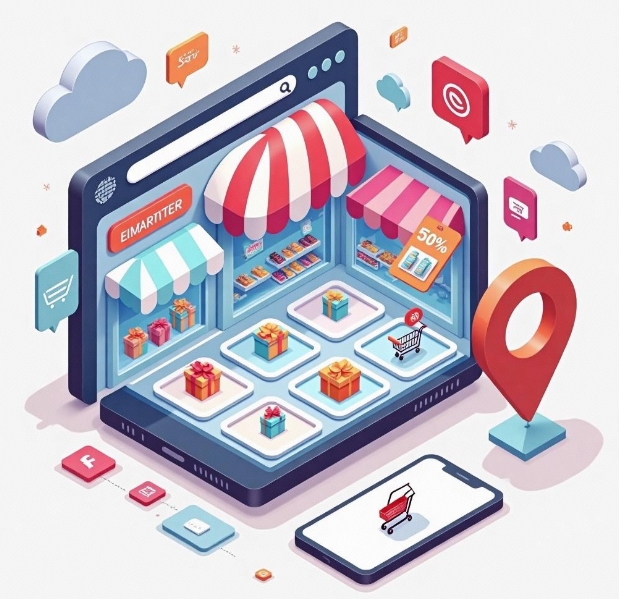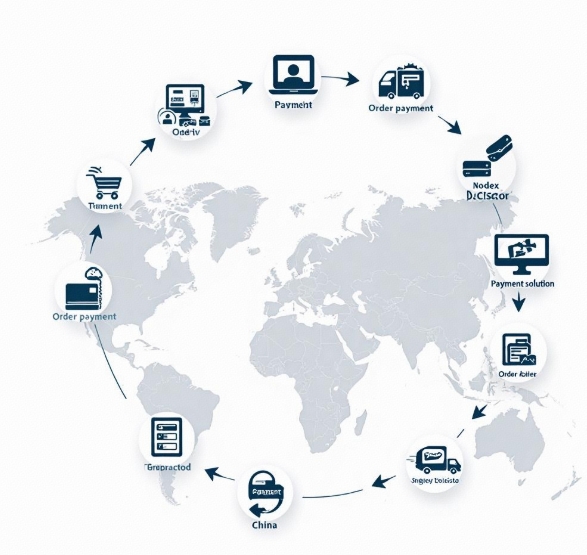Shenzhen Multi-User Mall Development Case (Industry Case)
- latest articles
- 1.DApp Development & Customization: Merging Diverse Market Needs with User Experience 2.Analysis of the Core Technical System in DApp Project Development 3.How to achieve cross-chain interoperability in Web3 projects? 4.How does the tokenization of points reconstruct the e-commerce ecosystem? 5.How to Set and Track Data Metrics for a Points Mall? 6.What is DApp Development? Core Concepts and Technical Analysis 7.Inventory of commonly used Web3 development tools and usage tips 8.Development of a Distribution System Integrated with Social E-commerce 9.Six Key Steps for Businesses to Build a Points Mall System 10.What is DApp Development? A Comprehensive Guide from Concept to Implementation
- Popular Articles
- 1.Future Trends and Technology Predictions for APP Development in 2025 2.Analysis of the DeFi Ecosystem: How Developers Can Participate in Decentralized Finance Innovation 3.From Zero to One: How PI Mall Revolutionizes the Traditional E-commerce Model 4.DAPP Development | Best Practices for Professional Customization and Rapid Launch 5.Recommended by the Web3 developer community: the most noteworthy forums and resources 6.From Cloud Computing to Computing Power Leasing: Building a Flexible and Scalable Computing Resource Platform 7.How to Develop a Successful Douyin Mini Program: Technical Architecture and Best Practices 8.Shared Bike System APP: The Convenient Choice in the Era of Smart Travel 9.How to Create a Successful Dating App: From Needs Analysis to User Experience Design 10.From Design to Development: The Complete Process of Bringing an APP Idea to Life
With the rapid development of the internet, e-commerce has become one of the important forms of business growth. Especially in recent years, Shenzhen, as China's center for technological innovation, has driven many enterprises to achieve significant breakthroughs in the development, operation, and optimization of e-commerce platforms. As a crucial e-commerce solution, Shenzhen's multi-user mall not only addresses the single interaction model between merchants and users in traditional e-commerce platforms but also promotes the diversified development of the e-commerce industry and facilitates the reshaping and innovation of the industrial chain.
This article will explore the application scenarios, functional design, technical architecture, development trends, and potential future challenges of Shenzhen's multi-user mall through practical case studies.
I. Background and Market Demand for Shenzhen's Multi-User Mall
With the intense competition in the e-commerce industry and the diversification of market demands, traditional single-merchant platforms are increasingly struggling to meet the needs of various merchants and consumers. Shenzhen, as one of China's most technologically advanced cities, is home to a large number of high-tech enterprises. While exploring innovation in the e-commerce field, these companies also provide robust technical support and e-commerce platform solutions for various industries.
Most traditional e-commerce platforms focus on a single merchant-to-user transaction model, where merchants list products on the platform, and users make purchases based on their needs, with the platform merely acting as an intermediary providing a transaction environment. However, the limitation of this model is its inability to meet the demands of multiple merchants and the personalized needs of consumers, especially in sectors like retail, supply chain, and wholesale, where the diverse requirements of different merchants and users make traditional platforms inadequate.
Shenzhen's multi-user mall development emerged in response to these challenges. A multi-user mall platform allows multiple merchants to open stores on the same platform, with each merchant independently operating their products and services, while the platform provides technical support, transaction security, and traffic distribution services. This multi-user mall model not only enables merchants to share platform resources and reduce the cost of setting up individual stores but also allows users to enjoy a wider variety of choices on a single platform.
II. Functional Design and Technical Architecture of Shenzhen's Multi-User Mall
1. Multi-Merchant Onboarding Management
One of the core functions of Shenzhen's multi-user mall is the diversified management of merchant onboarding. On this platform, each merchant can open an independent store and perform operations such as product management, order management, and marketing activities. To better serve merchants, the mall platform typically provides a convenient backend management system, allowing merchants to set up store information, list products, process orders, and run promotional activities according to their needs.
The merchant onboarding process generally includes steps such as merchant registration, submission of qualification reviews, store setup, and product listing. To ensure merchant qualifications, the platform sets different review standards based on the type of merchant, such as requiring businesses to provide business licenses, tax registration certificates, and other proof of qualifications.
2. User Experience and Personalized Recommendations
User experience is one of the key factors determining the success of a multi-user mall. Shenzhen's multi-user malls place great emphasis on simplicity and ease of use in user interface design, while also focusing heavily on personalized recommendations. The platform uses big data analysis and machine learning technologies to intelligently recommend relevant products based on users' purchase history, browsing behavior, and interest preferences, thereby enhancing user conversion rates.
Additionally, the platform optimizes product display and sorting based on factors like user location and shopping habits to improve the shopping experience. Through these technologies, the mall not only provides users with more accurate product recommendations but also helps merchants better attract potential customers.
3. Payment and Order Management
The payment and order management system of Shenzhen's multi-user malls typically integrates multiple payment methods, including Alipay, WeChat Pay, and bank card payments, to meet the diverse payment needs of users. Simultaneously, the order management system is a crucial component of the mall, allowing both merchants and users to track order status in real-time.
The mall platform provides automated order processing functions, including automatic order generation, notification sending, and distribution allocation, ensuring a smooth transaction process. Furthermore, the platform offers order data analysis features based on merchant needs, helping businesses understand sales performance and customer demands to boost sales.
4. Marketing and Promotion Tools
To help merchants increase product exposure, Shenzhen's multi-user malls typically offer a range of marketing and promotion tools, including limited-time discounts, spend-and-save offers, group buying, and point redemption. These tools assist merchants in boosting product sales and attracting more users.
The platform usually enhances product visibility through homepage recommendations, category displays, and keyword searches. Additionally, it employs multi-channel marketing via social media and SMS push notifications to increase user engagement and purchase desire.
III. Industry Application Cases of Shenzhen's Multi-User Mall
1. Retail Industry
In Shenzhen, multi-user malls are widely used in the retail industry. Many small and medium-sized retailers can quickly expand their market share and reduce the operational costs of physical stores by joining multi-user mall platforms. For example, a certain e-commerce platform in Shenzhen has helped numerous local retailers achieve online sales in a short period. Through the multi-user mall, merchants can leverage the platform's traffic and technical support to easily set up their stores and promote their brands and products.
2. B2B Wholesale Industry
Shenzhen's multi-user malls also play a significant role in the B2B wholesale industry. The core of B2B platforms is to address transaction issues between supply and demand parties, and Shenzhen's multi-user malls make B2B transactions more efficient and convenient by offering personalized services, precise demand matching, and logistics support.
For instance, a certain B2B mall platform in Shenzhen helps establish more stable cooperative relationships between merchants and buyers by providing specialized wholesale functions such as bulk purchase discounts, wholesale pricing settings, and inventory management.
3. Cross-Border E-Commerce
As a key commercial city connecting China with the world, Shenzhen has seen rapid development in cross-border e-commerce. Through multi-user mall platforms, merchants can conduct transactions with global buyers more efficiently. The platforms typically provide services such as multi-language support, international payment channels, and cross-border logistics to help merchants expand into overseas markets.
For example, a cross-border e-commerce platform in Shenzhen successfully offers global payment solutions to merchants through partnerships with international payment platforms, enabling them to conveniently engage in cross-border transactions and quickly enter overseas markets.
IV. Future Development Trends of Shenzhen's Multi-User Mall
With continuous technological advancements and changing market demands, Shenzhen's multi-user malls are moving towards greater intelligence, personalization, and globalization. In the future, technologies such as artificial intelligence, big data, and blockchain will play a larger role in the application of mall platforms, further enhancing operational efficiency and user experience.
1. Intelligent Operations
With the development of AI and big data technologies, future multi-user malls will become more intelligent. By analyzing user behavior and purchase data, platforms can perform more accurate product recommendations and targeted advertising. Merchants can also use this data to optimize their products and services, increasing customer loyalty.
2. Expansion of Cross-Border E-Commerce
Shenzhen's multi-user malls have immense potential in the cross-border e-commerce sector. In the future, these platforms will further expand into global markets, offering more convenient services to cross-border e-commerce businesses. Aspects like cross-border logistics and payment settlements will be further optimized to help merchants achieve global operations.
3. Application of Blockchain Technology
As a decentralized, tamper-proof distributed ledger technology, blockchain will see broader application in Shenzhen's multi-user malls in the future. Through blockchain technology, mall platforms can achieve more secure and transparent transaction systems, reduce intermediate links, and improve transaction efficiency.
V. Conclusion
As an innovative e-commerce platform model, Shenzhen's multi-user mall is gradually becoming a mainstream trend in the e-commerce industry. Through continuous technological innovation and application, Shenzhen's multi-user malls are providing more convenient, efficient, and personalized services to merchants and users. With further market development, these malls will play an important role in more industries, driving continuous innovation and transformation in the e-commerce sector.
-

How to achieve cross-chain interoperability in Web3 projects?
With the continuous development of WEB3 technology, Web3 has gradually become an···
-

Inventory of commonly used Web3 development tools and usage tips
With the continuous development of blockchain technology, Web3 has become a hot ···
-

Web3 development trend prediction: analysis of future technology directions and application scenarios
With the gradual development of blockchain technology, the concept of Web3 has m···

 Blockchain
Blockchain












